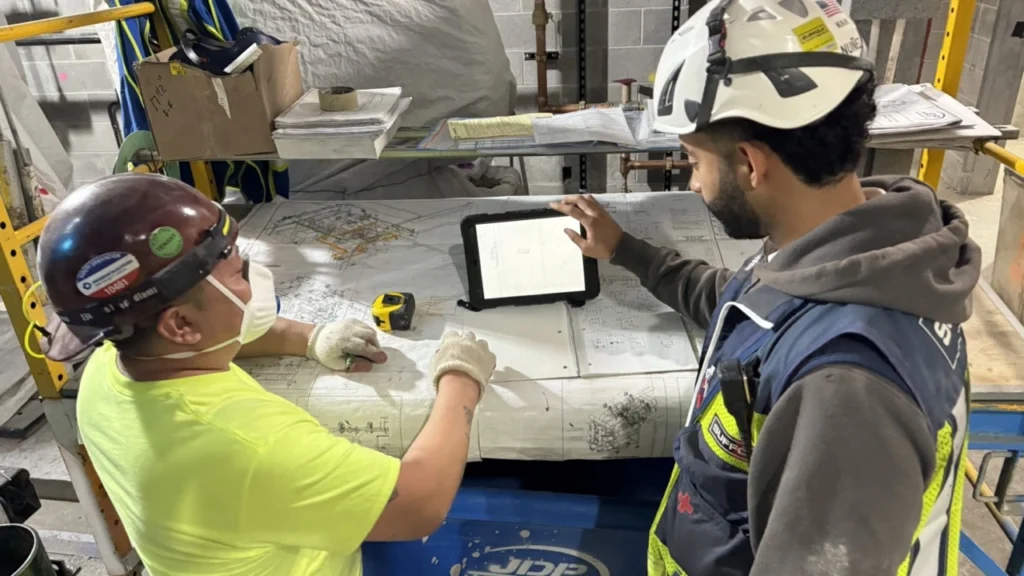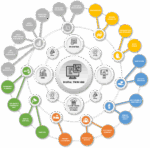
Manufacturing Trends Driving Industrialized Construction
Picture a manufacturing assembly line with all its benefits — standardization, efficiency, increased production.
It’s time for the construction industry to adopt a manufacturing mindset and enjoy these benefits, too.
Given today’s digital technologies, this approach is not just possible but inevitable. Despite the construction industry’s resistance to change, labor shortages and cost overruns are pushing more firms to try out industrialized construction (IC).
When done right, IC is transformative. Contractors who integrate industrialized construction can streamline processes, cut costs and waste, and enhance productivity.
What Is Industrialized Construction?
Industrialized construction (IC) applies manufacturing techniques and principles to the construction process. Through digital tools and automation, contractors can eschew traditional, labor-intensive, and site-specific practices in favor of standardized, repeatable, and streamlined methods.
Industrialized construction encourages a comprehensive view of projects, using digital tools for planning, visualizing, and managing the project. Using a digital model makes it possible to break the project into repeatable parts for prefabrication and modularization off-site.
With labor costs equaling anywhere from 20-40% of your construction project’s overall budget, this streamlining can reap significant cost savings. McKinsey & Co. suggests modular construction could speed up project timelines by 20-50% and save the construction industry $20 billion.
When done well, IC saves costs and increases labor productivity, reduces construction risks, replaces manual labor with machinery, speeds up preassembly, and improves work quality.
Manufacturing Trends to Watch in Construction

More firms and contractors are adopting digital modeling, prefabrication, and modularization to improve workflows. These methods shift work from the job site to controlled factory settings, reducing risk and on-site time.
BIM for Manufacturing
With detailed digital models for construction projects, contractors can visualize the entire project ahead of time and then break down the structure and process into repeatable parts.
For example, instead of taking the time to manually install one pipe in one bathroom of a building you’re constructing, you can use digital modeling to create a template for an entire series of pipes in an assembled system. When all the piping is identical, you don’t have to make individual piping networks for each bathroom in the building.
Digital modeling makes it possible to build exact instructional templates for off-site workers to construct and assemble the modules. VDC tools help ensure a smooth transition from the digital model to the physical structure while allowing contractors to manage the timeline, design, and workforce requirements.
Prefabrication
When working on a job site, you’re at the mercy of the weather conditions that day, and if it storms, your project can fall behind schedule.
With prefabrication, construction teams work off-site, using digital templates to manufacture necessary parts in a controlled warehouse environment. These parts are then transported to the construction site for assembly. Prefabricated parts can include anything from structural components like beams and columns to non-structural elements like wall panels and bathroom pods.
Prefabrication allows for increased quality control and reduced waste as workers produce components in controlled factory environments. By moving more work off-site, the process also reduces the costly risks and disruptions associated with fieldwork.
Multi-trade racking
One form of prefabrication is multi-trade racking for mechanical, electrical, and plumbing (MEP) elements. These multi-trade MEP racks consolidate the HVAC, ductwork, pipes, conduits, and more into single, organized units.
Like prefabrication for other elements, these multi-trade racks are constructed off-site in a factory environment, allowing for greater efficiency, quality control, and coordination between trades. It starkly contrasts traditional building methods, where each trade visits the site and takes its own measurements, which can create discrepancies among critical elements of MEP coordination.
Modularization
Modularization takes prefabrication a step further by constructing entire sections or modules of a building in an off-site factory.
These modules can include complete rooms or portions of a building fully equipped with electrical wiring, plumbing, and finishes. The building is crafted with the same materials, codes, and standards as one built in the field but typically comes together faster and more efficiently. Once completed, these modules are transported to the construction site and assembled to form a complete structure.
Modularization significantly reduces construction time, as modules are constructed off-site simultaneously with site work. Modularization can enable high quality and consistency, with each module built to precise specifications in a controlled environment.
How VIATechnik Helps You Embrace Manufacturing Trends
The wave of industrialized construction is gaining momentum, and contractors who don’t adapt and embrace the future will be left behind. VIATechnik can help.
As domain experts, our team of experienced consultants can help you take advantage of today’s manufacturing trends for construction, from implementing advanced software to optimizing workflows. From digital modeling to modularization, we can bring you up to speed with the currents of the industry.
Contact us today to learn how VIATechnik can help you embrace a manufacturing mindset and optimize your construction processes.



